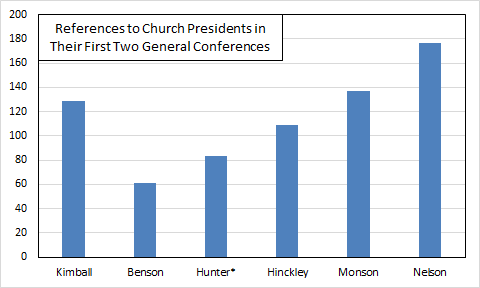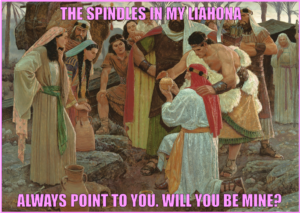Earlier this year, I wrote a post where I rewrote familiar Mormon titles by adding, subtracting, or changing a single letter, and then briefly wrote what the resulting story would be. For example, The Work and the Glory became The Work and the Gory, a dramatized version of early Mormon history, with special focus on the Danites. I thought it might be fun to try this with Book of Mormon stories too. As these stories could be given many different names, I used the chapter names from the Church’s Book of Mormon Stories for children as a starting point. I broke my one-letter rule a couple of times, but mostly I stuck to it. Please add your revised Book of Mormon story titles in the comments if you’d like.
Lehi Warms the People — Rather than jumping right into condemning them for their wickedness, Lehi opens his preaching to the people of Jerusalem with a few jokes.
Lehi Leavens Jerusalem — Before leaving Jerusalem, Lehi adds leaven to all the residents’ Passover bread, and brings down their wrath on him even more than his preaching had.
The Brass Pilates — Concerned that his family will get flabby while trekking in the wilderness, Lehi sends his sons back to Jerusalem to recover the secret of an ancient physical fitness system, the details of which are engraved on metal plates.
Lehi’s Ream — Lehi’s family makes it out of Jerusalem with 500 sheets of precious papyrus that they plan to keep records on. Unfortunately, they have to change plans and use metal plates when Laman and Lemuel wickedly use all the papyrus to make spitwads and papyrus airplanes.
Building the Shiv — When Lehi and Sariah’s family find themselves imprisoned in the land Bountiful, Nephi receives a series of revelations that allow him to build a shiv, which he uses to behead enough prison guards that the family is able to escape.
eOS — While hunting beasts in the forest, Enos prays for many things including the forgiveness of his sins, and for God to watch over his people. All of his desires are granted except for his wish to develop an operating system that will unseat Apple’s flagship OS on their own hardware.
Bling Benjamin — An aging king wants to give a farewell address to his people, but their numbers are so large that his voice cannot reach them all. He sends written copies of his speech out so his people can know his words, and he also delivers the speech from the top of a tower while wearing as much bling as his aging body can manage, so that even people far away can see him shimmering in the sunlight.


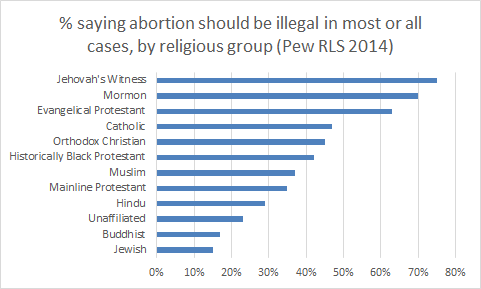 (Note that this is just a graph I made from the Pew graph so that I could sort by percentage rather than by religious group name. If you follow the link in the paragraph above, you’ll find a graph with the same numbers.)
(Note that this is just a graph I made from the Pew graph so that I could sort by percentage rather than by religious group name. If you follow the link in the paragraph above, you’ll find a graph with the same numbers.)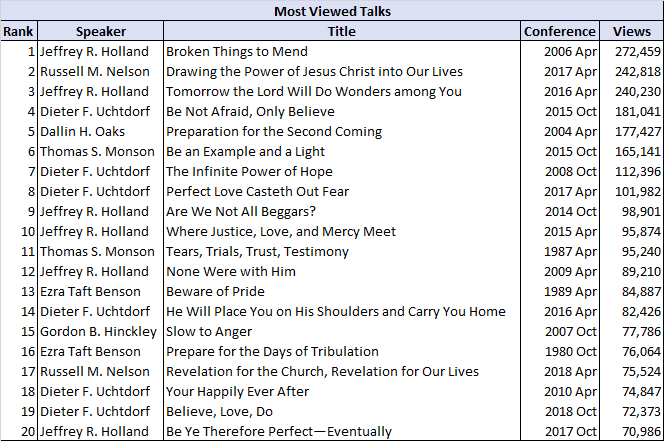




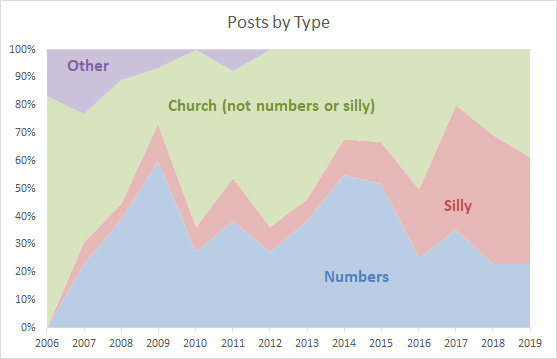




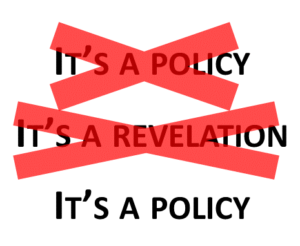 who were hurt during the three and a half years it was in place? Do Church leaders seriously expect us to believe that it was just the will of God that they suffer, but that now God has changed his mind? This change feels similar to the changes made in the endowment ceremony just a couple of months ago. It was great that the hierarchy-imposing structure was reduced, but it was awful that there was not even a mention of the pain that had been caused to so many women by the the “hearken” and “obey” covenants and the resulting power differential they were put under.
who were hurt during the three and a half years it was in place? Do Church leaders seriously expect us to believe that it was just the will of God that they suffer, but that now God has changed his mind? This change feels similar to the changes made in the endowment ceremony just a couple of months ago. It was great that the hierarchy-imposing structure was reduced, but it was awful that there was not even a mention of the pain that had been caused to so many women by the the “hearken” and “obey” covenants and the resulting power differential they were put under. hed our bishop and told him he wanted to do just one year and do a service mission. Happily, our bishop was on board, and he’s been very supportive through the whole process. The process of getting my son officially called was long and drawn out because the way the Church was handling service missions was in the middle of a major change when my son went to the bishop. So it took a while, but he’s finally official and doing his work. He seems to be enjoying it.
hed our bishop and told him he wanted to do just one year and do a service mission. Happily, our bishop was on board, and he’s been very supportive through the whole process. The process of getting my son officially called was long and drawn out because the way the Church was handling service missions was in the middle of a major change when my son went to the bishop. So it took a while, but he’s finally official and doing his work. He seems to be enjoying it.